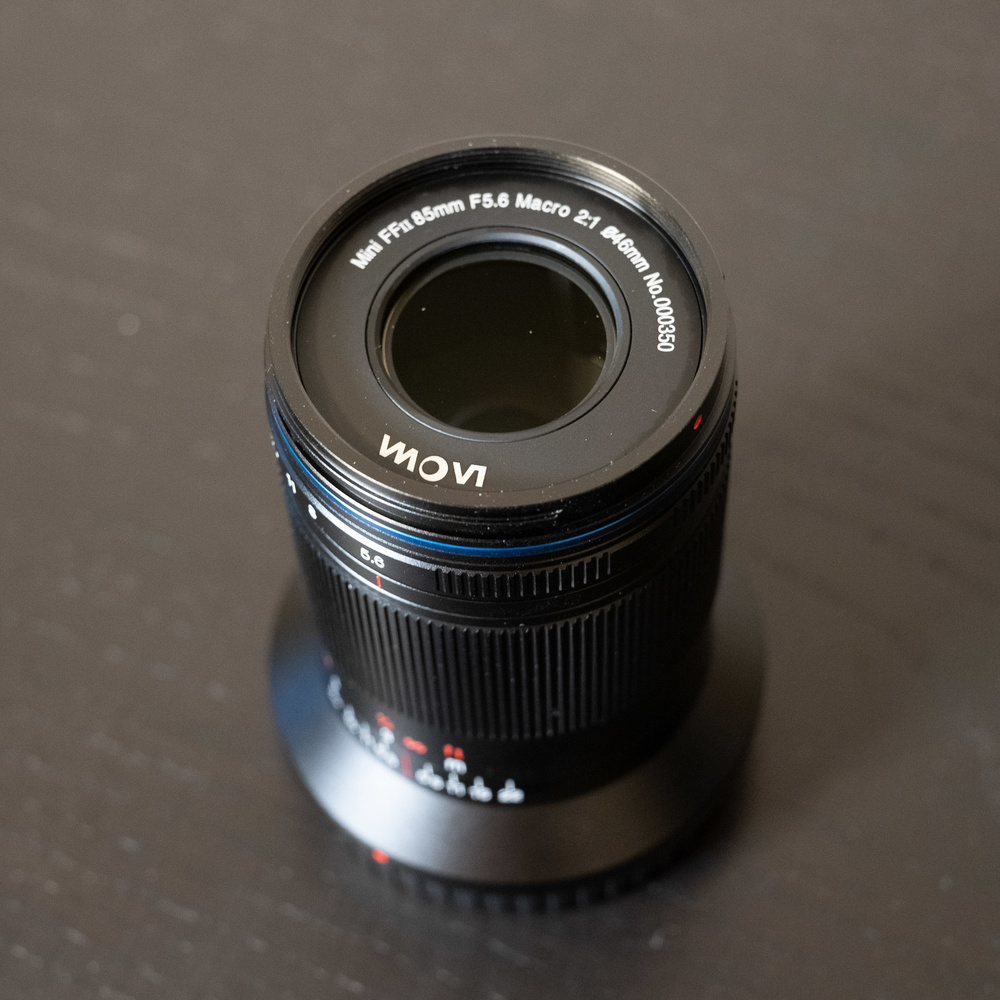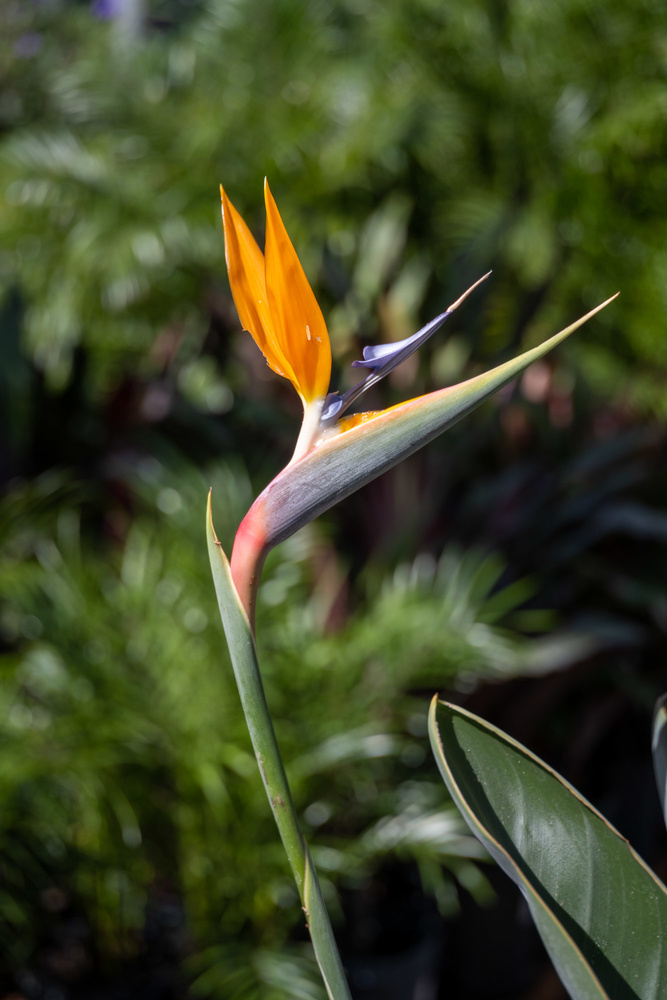If you’re into macro photography, you might be wondering why so many macro lenses emphasize a wide aperture; f/2.8 is nice to have, but when focused down to 1:1, it’ll leave you with no depth of field. From my point of view, Venus Optics seems to have had the same thought. They built a macro lens with a spec sheet that’s focused on delivering macro results. Is this the new best option for macro photographers?
Venus Optics has built a name as a manufacturer of specialty wide angle and macro lenses. In the past, I’ve looked at a number of their lenses and always come away impressed with the creativity their lens designers have. They’ve built products that often offer something no other lens on the market matches. Whether it’s a unique focal length, form factor, price point, or some combination of all of the above, their lenses are always interesting. This one is no exception.
The 85mm f/5.6 is available for Sony E mount, Nikon Z mount, Canon R mount, and Leica M mount. It covers a full frame image circle and uses what appears to be a relatively unique optical formula, which features extra-low dispersion glass and an apochromatic design for reduced chromatic aberration (the false colors that can fringe your subject).
The biggest selling point on the spec sheet is the lens' capability to focus at a ratio of 2:1. For a macro lens, this ratio means that the subject will appear twice as large on the sensor as it is in real life. Most macro lenses can do 1:1, while this can enlarge a subject quite a way beyond that, letting you get even closer and get even more detail in your images. The listed minimum focusing distance is 16.3 centimeters, but as this is measured from the focal plane, you won’t have much distance between the front of the lens and the subject at maximum magnification.

Fortunately, like other macro lenses, the front element is slightly recessed and works well with both the included metal hood and a protective filter. Furthermore, the lens is internal focusing, which can reduce both dust intrusion and the risk of bumping the lens into the subject by just adjusting focus.

As mentioned, this lens is small. It’s listed at about 250 g, despite having a sturdy metal construction. The front filter is a tiny 46 mm diameter. For comparison, I photographed it alongside my Z mount 105mm macro, but even that image doesn’t do justice to how compact this lens is. This size advantage makes it a great option to slip into your bag for an unexpected macro opportunity or even a quirky short telephoto option when using a few primes, as the lens works perfectly well at normal focusing ranges too.
Performance
Testing performance on this lens first requires a discussion of one of the tradeoffs the lens does make. With a maximum aperture of f/5.6, this lens is going to be significantly slower than many other primes in the corresponding focal range. For dedicated macro shooting, this isn’t an issue, as you’ll typically need to stop down anyway, but could impact usability when working with this lens in a non-macro capacity. Having a slower max aperture, however, does make it possible to get great optical performance at a lower price point. Smaller glass elements are cheaper to make for a given performance target, and the lens’s MTF charts indicate competent optical performance throughout most of the frame.

In real-world testing, I found that both resolution and contrast are quite good throughout the frame. The lens delivers great image quality even at 2:1 magnification; this spec isn’t just hot air, but instead a real and usable part of the focus range.

The focus at high magnifications, however, will test your abilities as a camera operator. The lens is manual focus, and while the manual focus ring is pleasant to use, a thin depth of field even at f/11 can make nailing focus on moving subjects tricky. What might be surprising if you haven’t shot macro before is that at 1:1 or 2:1, almost everything is a moving subject. This level of magnification will reveal issues with your tripod setup and shutter technique that you might not have noticed on another lens.

When you do nail focus, the results are very nice. Pleasing color performance and contrast are evident on all subjects. The bokeh is good. On some of the trickiest backgrounds, I did notice a bit of harshness when stopped down to f/8 or f/11.
True to its apochromatic designation, I didn’t notice any color fringing. For macro subjects, this is particularly helpful when considering focus stacking or reproducing images of things like text or artwork, where neutral rendering is preferred. Along with the lack of chromatic aberration, this lens also seems to be free of major vignetting issues. At f/5.6 and 2:1, the very edges of the frame appear to have a slight vignette to them, but this can be manually corrected in Lightroom easily.
Conclusion
Venus Optics 85mm f/5.6 2x Ultra Macro APO is a unique offering. By prioritizing features like apochromatic behavior and trading aperture for size, the lens sits in a unique position. While many macro lenses from major manufacturers have broadened their feature set to diversify their use cases, this lens is a great fit for particular users.

If you’re looking for some of the cheapest access to 2:1 magnification around, this lens is a great option. Compared to Venus Optic’s other 2:1 macro offering, this lens is a far smaller option, but also only available for mirrorless mounts. Given the competent performance at normal focus distances, this lens could also be a unique addition to a prime walkaround kit for mirrorless photographers who don’t have access to a full stable of native primes.
Available at $449 for Sony, Nikon, and Canon, as well as $499 for Leica M, this lens is an impressive value.
What I Liked
- Incredibly portable (can fit in a jacket pocket)
- Offers 2:1 capability with strong performance
- Durable metal construction
- Internal focus and front element design is nice for macro use
What Could Be Improved
- The lens doesn't pass aperture information to the camera
- Small range of the total focus ring throw







I like what Venus Optics are doing but sadly their mirrorless lenses don't have electronic contacts and most are quite a bit longer than the DSLR versions as if they are simply DSLR lenses with a built in adapter. They focus 'the other way round' which makes me think they are adapted Nikon F lenses.
like saying you'd bike to work but there's no airconditoner on your 2-wheeler
with today's digital cameras, you have to think through the variables when using a manual lens - but you can decide what to leave to the camera
just remember that a close focus will exagerate movement - so use a tripod unless you really belive in the ibis fairy
You really didn't understand my comment with your bizarre response. Firstly, I am more than happy using manual lenses. I am merely stating I find quite a few Laowa lenses are not true mirrorless lenses but adapted Nikon DSLR lenses, without electronic contacts. For the price some of these lenses go for this to me is a real shame.
Venus Optics always offer something different and at the same time practical
https://www.youtube.com/watch?v=1ruqoCKwUtk